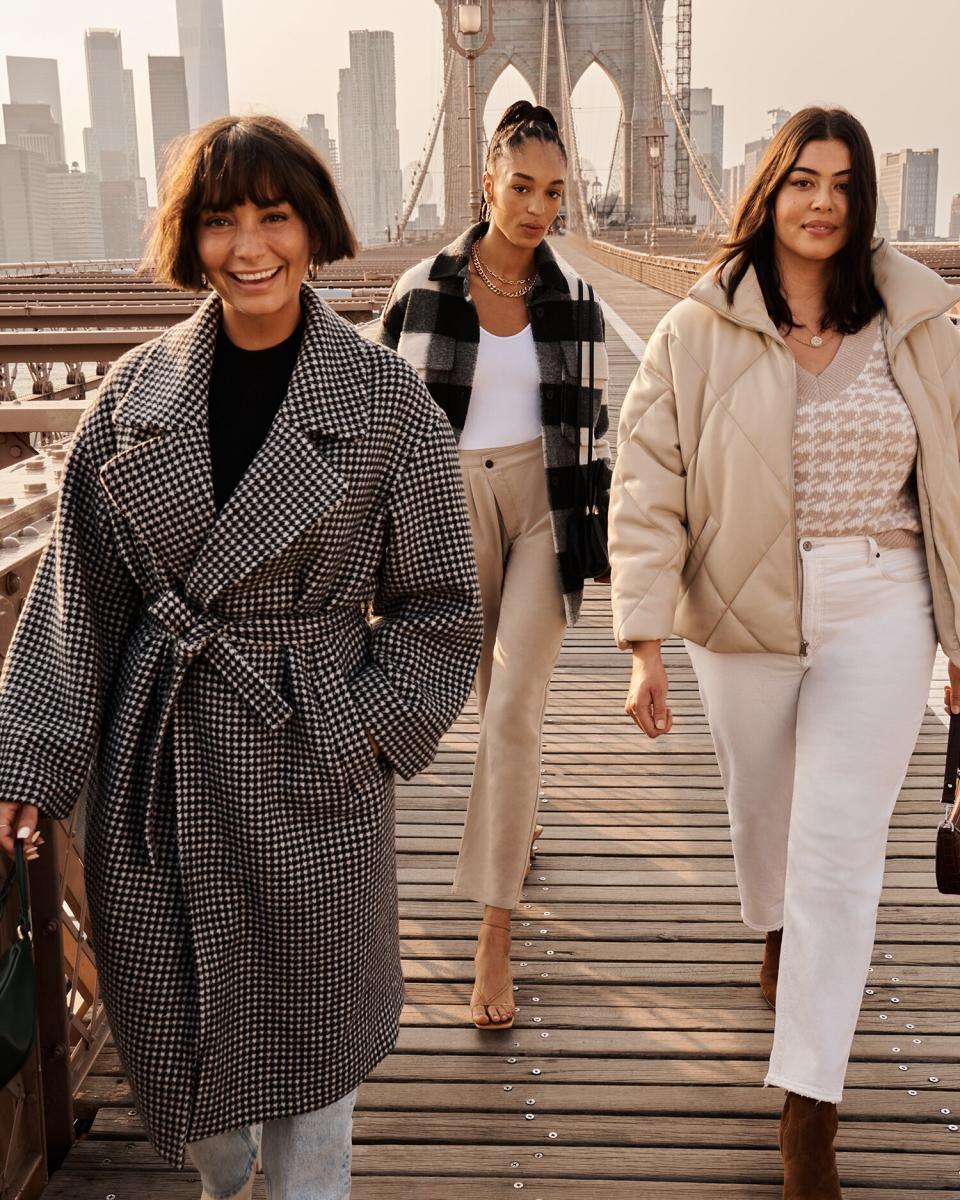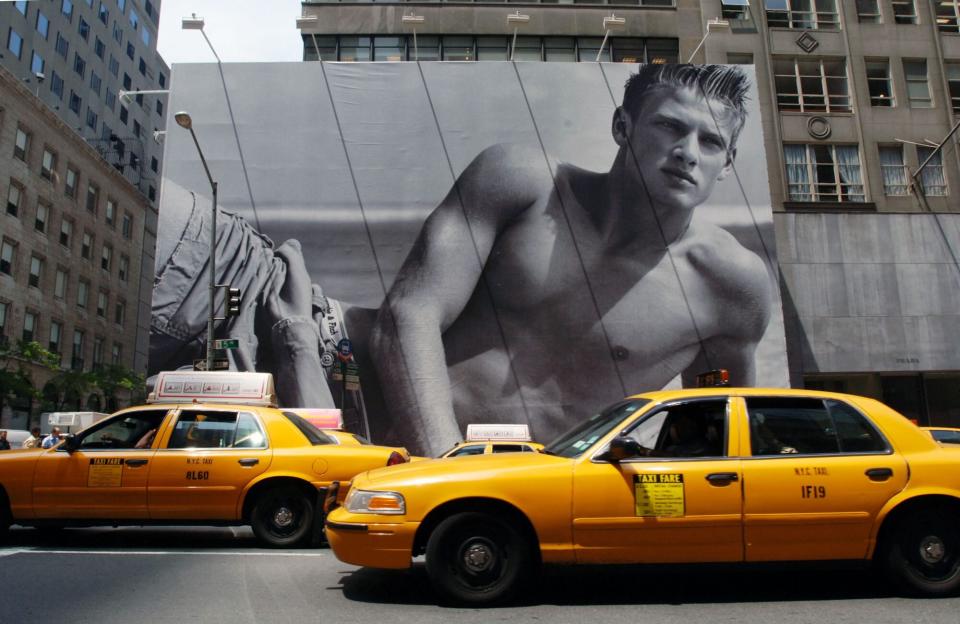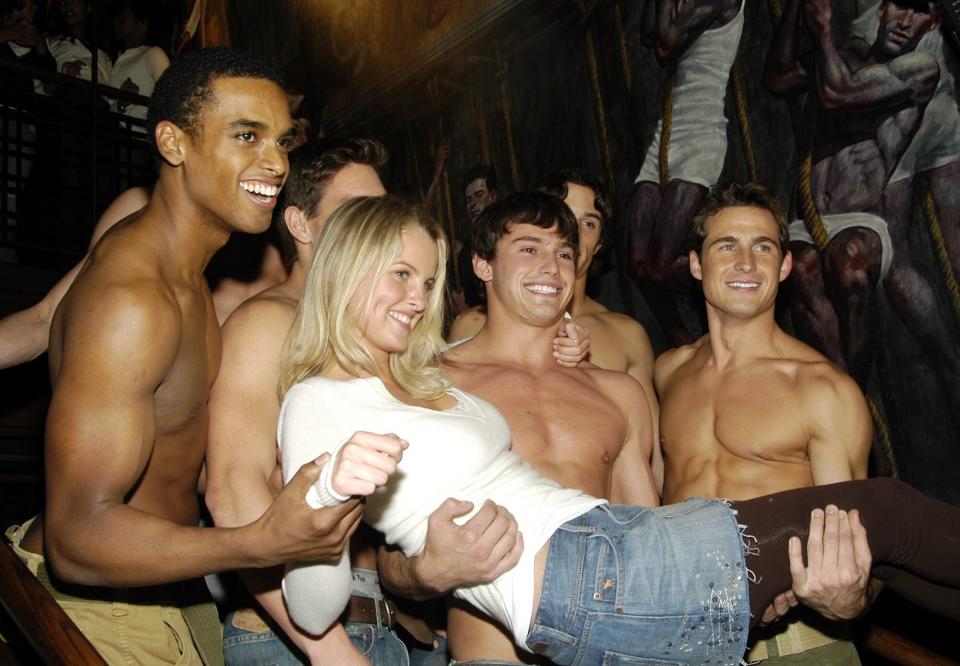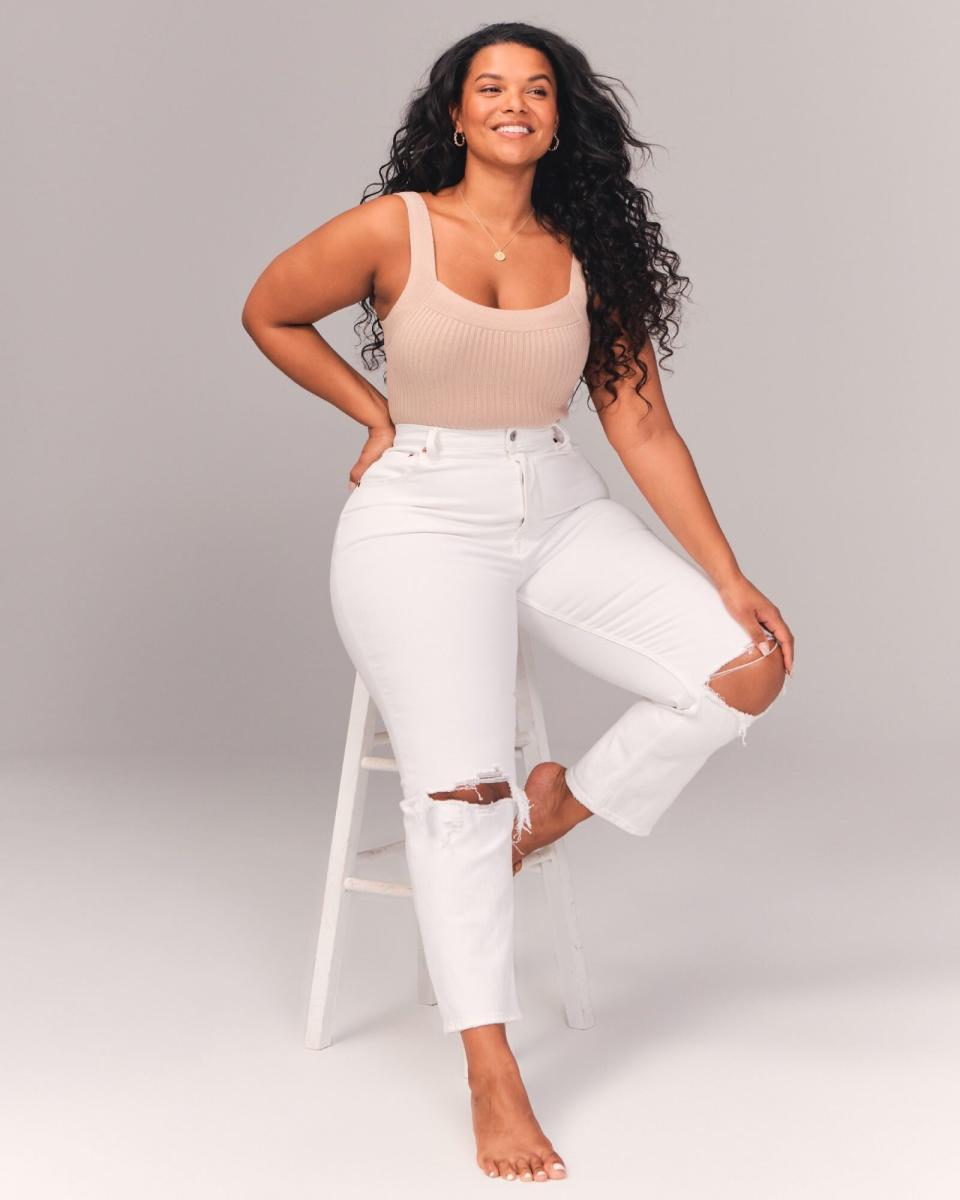Abercrombie & Fitch Wants to Shed Its "Cool Kid" Reputation — But Is It Doing Enough?

Courtesy of Abercrombie & Fitch
In 2005, I was 15 years old, and while back-to-school shopping for my freshman year of high school, I got into a blow-out fight with my mom over a pair of bedazzled Abercrombie & Fitch jeans that I absolutely had to have. They cost more than $100, and like any reasonable parent, my mom couldn't justify spending that much money on ripped denim with rhinestones on the butt. Thinking about it now seems silly, but at the time, it was a make-or-break moment for me. In my mind, what I wore on the first day of freshman year would determine my entire high school trajectory.
After an hour of pleading my case on a mall bench, my mom finally gave in, and I got the jeans. Did they change my life? No. Was I instantly considered cool by classmates? Not a chance. But it didn't matter, the jeans made me feel like I belonged — or at the very least, not completely unpopular. Now, as a 31-year-old woman, I'm wise enough to recognize the exclusionary marketing tactics that attracted the "cool kids," or in my case, the kid who wanted to be cool.

Getty Images
In the early '00s, Abercrombie seemingly worked overtime to make people feel left out. Their jeans only went up to a size 10 (the average size in the U.S. is 16 for women), the Bruce Weber-shot ad campaigns featured thin, half-naked models who were predominately white, and the clothes were overpriced. Recently, this gatekeeping mentality was explored in White Hot: The Rise & Fall of Abercrombie & Fitch, a new documentary about the popular mall brand on Netflix — and while the film certainly brought back a wave of Y2K fashion nostalgia (lacy tanks, graphic tees, layered polos), it also shed light on Abercrombie's sharp pivot from cruel to kind.
we are not talking enough about abercrombie’s hard pivot
— taylor garron (@taylorgarron) March 8, 2022
RELATED: The Unironic Return of Millennial Teen Style
Throughout the doc, former employees and models of the brand spoke about negative experiences that ranged from racial discrimination (people of color were only allowed to work in the stockroom) to sexual misconduct (fashion photographer Bruce Weber would invite male models over for private dinners. If they refused the offer, they were fired). Former employee Anthony Ocampo shared how his experience of being barred from working at the store, because he was Filipino, is something he still struggles with today. "Abercrombie affected my self-esteem in that the company peddled a very narrow sense of what beautiful was," he said. "For Abercrombie, to be beautiful was to be thin and white and to surround yourself with people who were also thin and white. I am neither thin, nor white, and so I subconsciously internalized the belief that I wasn't beautiful."
I, too, can attest to the bad business practices from personal experience. The summer going into my senior year of high school, I was "recruited" to work at my local Abercrombie & Fitch store, but by September I stopped receiving hours. Clueless as to why this was happening all of a sudden, I confided in one of my coworkers, who told me point blank, "well, you have put on weight since you first started working here." My heart sank. It was true, I gained between 10 and 15 pounds after I began taking an antidepressant for general anxiety that summer.

Getty Images
My story is not unique. So many others were subject to the weekly ranking system of employees. In the documentary, journalist Moe Tkacik revealed that A&F store managers had review sheets that required them to score employees on a scale from "cool to rocks." If they weren't labeled as at least "cool," they were dropped from the schedule and silently fired. Essentially, it was the company's way of saying, "you can't sit with us!"

Getty Images
But now, the new Abercrombie & Fitch wants to invite everyone to the metaphorical lunch table. Shedding its mean girl reputation, Abercrombie has ushered in a new era of change under its current CEO Fran Horowitz. Since her appointment in 2017, Horowitz has made the most of the brand's second chance. For starters, Abercrombie's sizing is now more inclusive — they go up to a size 16 in bottoms and XL in tops and dresses for women — and the brand offers a new assortment of denim that provides extra space in the hip and thigh area for curvier bodies. A quick look around the website will show plus-size models and brand ambassadors of color featured prominently on the landing page. Meanwhile, last year, the brand co-created a collection with The Trevor Project, a suicide prevention organization for the LGBTQ+ community's young people, in celebration of Pride.
"When Fran Horowitz became CEO in 2017, we made a 180-degree turn to shift the focus from being about what we want consumers to do, wear or say, to what they were looking for, and what they believe in," an A&F spokesperson told InStyle. "After establishing the Abercrombie brand's customer as the young millennial, it was clear that their tastes had evolved and we spent time understanding what they wanted from a brand. "In shifting our mindset to be customer first, we also implemented new policies, re-envisioned store experiences, and established authentic partnerships with purpose-led organizations." The brand went on to highlight that they removed their employee "look policy" in 2015, discontinued the airbrushing of models three years after that, and in 2020, they launched their own social and racial justice initiative called The Abercrombie Equity Project.

Courtesy of Abercrombie & Fitch
RELATED: This Iconic Mall Brand Came Back From the Dead to Launch Its First Footwear Capsule
But is it enough to right the wrongs of the past? Benjamin O'Keefe, an activist who started an online petition calling for a boycott of Abercrombie & Fitch when he was 18 years old, thinks work still needs to be done. "There's a difference between repairing your image and repairing the harm you've done," he told InStyle. "Do me favor, go to Abercrombie's corporate website — take a look at their senior leadership. You'll see white faces."
In response to the documentary, Horowitz acknowledged that Abercrombie has evolved and is still a work in progress in an open letter on Instagram. "We own and validate that there were exclusionary and inappropriate actions under former leadership. Since I became CEO in 2017, we've overhauled Abercrombie and transformed with intention into a place of belonging," she wrote.
The reaction from the internet was mixed. Many thought the message was "too little too late," while others applauded the brand for its commitment to change. "Way to demonstrate accountability, humility, and the impact of positive change in business," one person commented. However, some remain skeptical. "How are you inclusive when you only go to an XL?" one commenter questioned. A second added, "You should try having plus-size men as models. You have plus-size women on your site. But all your men are skinny or ripped."
There's certainly room for improvement — namely in diversity at the top, as almost all senior leadership and board of directors are white, and size inclusion, their extended sizes are limited in what they offer for both men and women — but redemption is possible. As Carla Barrientos, who joined a class-action lawsuit against Abercrombie for race and sex discrimination in June 2003, points out, "I think that the recent changes at A&F need to be lasting changes in order to really see if their efforts are impactful and sincere enough." O'Keefe agrees: "Redemption is possible, but it takes centering the people who you've harmed both externally and in your ranks."

